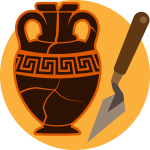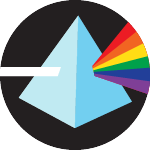Ring around the Planet
Galileo first discovered the rings that circle the butterscotch-colored planet known as Saturn in 1610. Using one the first telescopes ever made, Galileo assumed that Saturn's rings were attached to the planet and described them as handles. Forty-five years later, Dutch astronomer Christiaan Huygens correctly noticed that Saturn's rings surround the planet, but are not attached to it. The rings were named as they were discovered and were named after letters of the alphabet.
Diameter: 75,000 miles
Location: 6th planet from Sun
Average Distance from Sun: 890 million miles
Cloud Top Temperature: -220 degrees F
Number of Moons: at least 18
Orbital Period: 29 Earth years
Characteristics: atmosphere is composed mostly of helium, core consists of rock and ice
Significance: Saturn is the second largest planet in our solar system

It takes Saturn almost 30 years to travel around the Sun, but its days last:
just 10 minutes
only 10 hours
over 10 months
Correct!
On Saturn, the Sun rises every 10 hours. In a year on Saturn there are 23,000 days!
Even though Saturn is known as the ringed planet, the other three "gas giants"—Jupiter, Uranus, and Neptune—also have ring systems.
Fact
Saturn's rings are the brightest and stretch the farthest: from the surface—about 75,000 miles out.
NASA has never been able to send a satellite or probe to observe Saturn.
Fiction
Three probes have passed Saturn: Pioneer 11 in September of 1979 followed by Voyager 1 and 2. The Cassini probe is due to pass by Saturn in 2004. Stay tuned...




 Biodiversity
Biodiversity
 Brain
Brain
 Genetics
Genetics
 Marine BiOLogy
Marine BiOLogy
 MicrobiOLogy
MicrobiOLogy
 PaleontOLogy
PaleontOLogy
 ZoOLogy
ZoOLogy
 AnthropOLogy
AnthropOLogy
 ArchaeOLogy
ArchaeOLogy
 Astronomy
Astronomy
 Climate Change
Climate Change
 Earth
Earth
 Physics
Physics
 Water
Water
